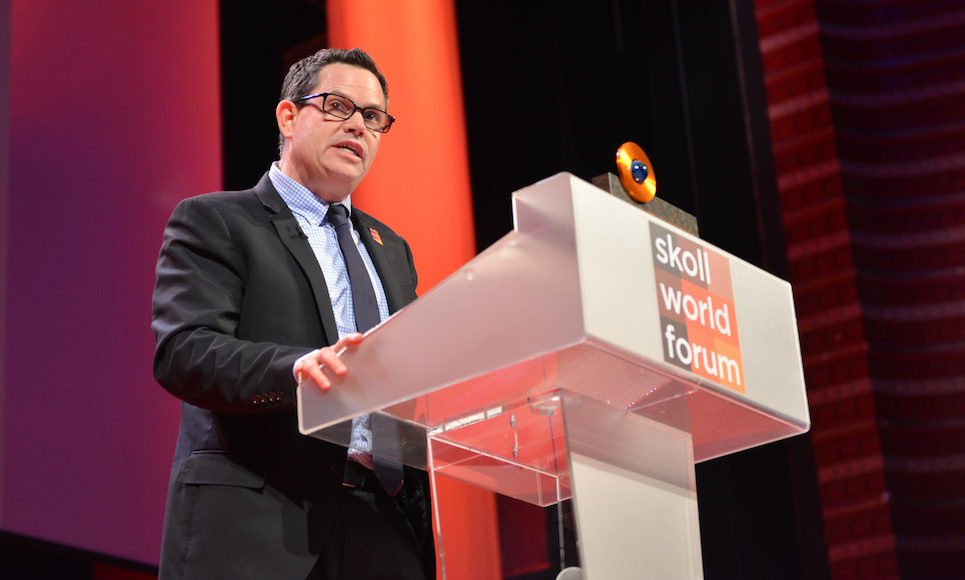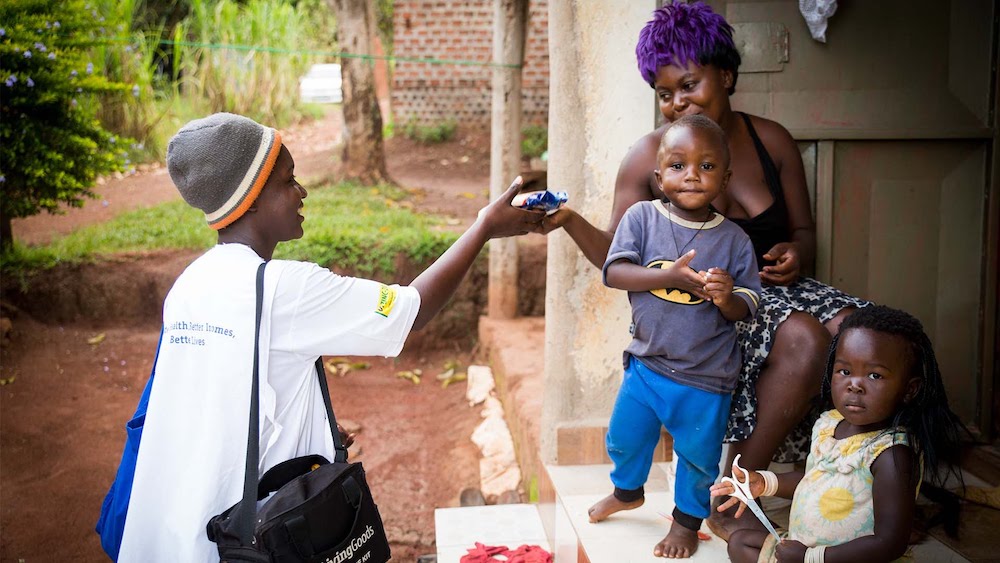
Listen to our exclusive interview with Living Goods founder, Chuck Slaughter.
Subscribe to this show on iTunes | Stitcher | Soundcloud
There’s often the impression that for-profit business models and positive social impact are at odds with each other.
Before you draw any conclusions, consider these results achieved by Living Goods, a Skoll Foundation Social Entrepreneur Award winning company:
- Reduced under-five mortality rate by 25% for less than $2 per person per year
- Reduced drug prices by 17% at clinics and drugstores in areas where it operates
- Reduced the supply of fake drugs by 50%
Living Goods made all these powerful impacts and more by applying a for-profit business model to a non-profit organization.
Founder Chuck Slaughter brought together the best of private and public sectors and, in his own words, “used business tools to solve big hairy social problems.”
Before we dissect Chuck’s success secrets, let’s briefly look at what Living Goods does:
Living Goods operates in sub-Sahara Africa, supporting a network of community-based health entrepreneurs—women living in the community—to go door-to- door to teach families how to improve health.
These health entrepreneurs are equipped to make a living by selling low-cost, high-impact health products such as malaria and diarrhea treatments, healthy foods, and family planning products, so they can make a difference while making a living.
Living Goods even designed and developed its own line of products aimed to create substantial and long-term social changes.
For example, they offer a line of fortified food for toddlers six to 24 months of age because children in sub-
Saharan Africa often experience stunted growth that leads to a lifetime of underperformance in school and income
generation.
What makes Living Goods so successful?
What did Slaughter learn from his days in business school and as an entrepreneur that he applied to this non-profit organization?
Here are six lessons every social entrepreneur can learn from Living Goods:
1 – Apply Proven Business Concepts to Solve Inefficiencies
When Slaughter first got involved with an NGO in public health, he observed that owners of small drugstores and clinics were sitting around in their stores, waiting for customers to show up.
As a result, they were not as profitable as they should have been while people in the community were not getting the health care products they needed. There were a lot of inefficiencies in the system.
He devised a proactive solution to get those owners out of the store and into the community, providing the resources they needed to turn “sick care” into healthcare.
He then built on the success and leveraged the proven business model of person-to- person selling perfected by Avon, Amway, Tupperware, and the like to help rural women create a source of income while making essential health care products accessible to more people at a low cost.
According to Slaughter, Living Goods’ products are “cheaper than free” because of the efficiencies they create; instead of having to spend half a day and a few dollars to travel to a clinic for free medications, people can now get healthcare products delivered to their doors for just $0.50.
2 – Adopt a Cost-Efficient, Profit-Focused Model
Instead of blindly following a non-profit business model, Slaughter took the best of both public and private sectors to design his organization.
Even though Living Goods is registered as a non-profit, they adopted a for-profit business model for their operation.
Living Goods received funding from investors by showing a proof of concept and by leveraging Slaughter’s reputation in the private sector.
They use the same best practices, knowledge, and know-hows to run a non-profit organization as a for- profit business.
Instead of grants, they generate ongoing income from selling products to customers which proved to be more cost- effective than a public sector solution in which employees are salaried and services are free.
As a result, Living Goods is able to provide effective services at a fraction of the cost.

3 – Do Your Homework
Slaughter didn’t go into the market blind.
He did a lot of research on the potential market, the principle cost of mortality, the diseases to target, local conditions most conducive to his business model, population density, income and spending per capita, as well as political stability in order to identify the best market in which to start Living Goods.
He also noted that there’s a delicate balance between doing research and getting stuck in doing research.
Apple wouldn’t have invented the iPod if they simply did research and tried to come up with product ideas based on customer survey and market demands.
When you’re creating new solutions, you often can’t find the answer just by asking people. You can only find out if your idea works by offering a version of the product or service in the market to garner real feedback.
4 – Use the Lean Approach
Slaughter advises testing a business concept in the market by following the Lean Approach when developing a startup plan.
He tested the business model for Living Goods by scaling just large enough to test the market and getting reliable answers.
He was able to validate his concept quickly and cheaply; during the first 6 months, he only had one full-time employee while proving that the market was viable.
With this proof of concept—a hybrid model that covers 100% of the cost through the sales of products—he was able to get funding from investors to scale up.
Related: Everything you need to know about making good decisions
5 – Partner With Local NGOs
Living Goods partnered with local NGOs that already have an established footprint to test their business model. This approach greatly reduced the amount of time and money required to understand the market and fine-tune their approach.
From there, they were able to build their own network which, from day one, focused on monetization to speed up their growth and impact.
6 – Leverage Technology
Two years ago, Living Goods put an Android phone in the hands of every entrepreneur in its network. The phone comes with a custom Living Goods app which automates how the agents carry out their diagnosis, enables them to follow up with customers, and allows the organization to track the performance of every agent.
The use of mobile technology has tripled the speed Living Goods do performance management, and vastly improved the quality of the work on the ground.
Living Goods owes its success to Slaughter’s ability to quickly and cheaply test a business idea and adapt to the market using local resources and technology.
Slaughter’s focus on partnership, relationship, and collaboration also helped the company succeed at a rate that rivals the best startups in the world.

—
Chuck Slaughter and Living Goods were featured in issue 10 of Change Creator Magazine. Stop by iTunes or Google Play to get the app and read the rest of issue 10 for free!
Related: Everything you need to know about making good decisions
You might also enjoy:






